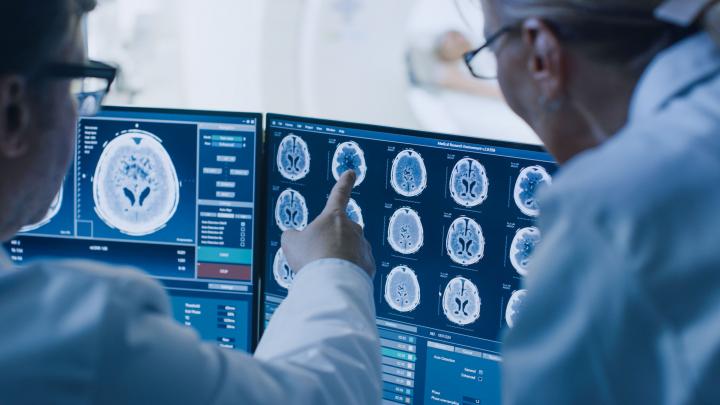Neuroendocrine tumors (NETs) are unusual and difficult to diagnose. It slowly develops with nonspecific symptoms that can be easily confused with other diseases. Before making a correct diagnosis, many patients are suspected of having, for example, gastrointestinal ulcers, asthma, menopause, and even neurosis.
Neuroendocrine tumors, soon called NETs (neuroendocrine adenomas), are relatively rare and very specific tumors – they can develop in a patient’s body for years without developing any distinct symptoms or mimic symptoms of completely different diseases. This means that before patients with neuroendocrine tumors receive the correct diagnosis, they seek help from the wrong specialists for many years. They treat asthma, peptic ulcer disease, enteritis, and irritable bowel syndrome, and mature women often ignore symptoms when they suspect they are experiencing menopause. Meanwhile, the cancer is progressing.
“Among NET patients, the majority (60%) are hormonal active tumors. It is the middle intestine that secretes serotonin (carcinoid tumors) and pancreatic tumors such as insulinomas (which secrete the hormone insulin) and gastrin tumors (that secrete the hormone gastrin). Paroxysmal diarrhea, redness of the face, or bouts of hypoglycemia and recurrent gastric and duodenal ulcer disease.These nonspecific symptoms often cause a wrong diagnosis (irritable bowel syndrome, reactive hypoglycemia or amenorrhea), which leads to prolongation of the process Diagnosis is dramatically, often up to 5-7 years, “- explained during the conference on Thursday, Prof. Doctor Hub. Dr. Marek Rocha, Head of the Department and Clinic of Endocrinology, Metabolism and Internal Medicine at the Medical University of Poznan, President of the Polish Society of Endocrinology.
Neuroendocrine tumors are often diagnosed randomly because they have no distinct symptoms or symptoms that indicate other diseases. In the opinion of the professor. The transmissible symptoms, the multiplicity of symptoms, the lack of specificity of the symptoms, as well as the slow course of the disease cause the diagnostic process to be extended for many years.
The ambiguity in the evaluation of neuroendocrine tumors makes them extremely difficult to diagnose, even for medical professionals.
Patients with atypical symptoms report, among other things, to cardiologists, pulmonologists, gastroenterologists and allergists. However, there are symptoms whose regular, long-term recurrence may indicate the presence of cancer. These include symptoms that mimic irritable bowel syndrome, asthma-like symptoms, paroxysmal skin redness, difficulty breathing, muscle spasms, swelling, and unexplained anxiety.
Neuroendocrine neoplasia is a rare disease. Statistics show 2.5 – 5 cases per 100,000 inhabitants per year – although this may be an understatement. The disease affects adults, often in the sixth decade of life. They fall at about 70 percent. In the digestive system and up to 30 percent. In the respiratory system. They only make up 2 percent. Organ tumors.
The most common is a carcinoid tumor that produces serotonin and gives symptoms of carcinoid syndrome (redness, diarrhea, weakness, precancerous heart disease) – Professor Dr. Marek Rocha.
What distinguishes neuroendocrine tumors from other cancers is the fact that they grow more slowly, which gives a much better prognosis. In the case of neuroendocrine neoplasms, even the late detection of the disease does not exclude the opportunity for effective treatment. As the professor emphasized. Damn it, which is good news, considering that in nearly 60 percent of patients, the disease is diagnosed at the stage of metastases to other organs.
Neuroendocrine tumors are often highly variable tumors with a prevalence index of up to 50%. For this reason, it develops much slower than traditional crayfish. The presence of somatostatin receptors on their surface enables the use of somatostatin analogs, which do not cause the side effects found in classic systemic chemotherapy.
The main type of treatment is surgery. In the case of lesions that cannot be excised, pharmacotherapy is a form of palliative treatment. We use the somatostatin analogues mentioned above first. If disease progresses, we use PRRT or molecularly targeted therapies. It is also worth adding that the average survival time and prognosis of these patients is much better than in conventional, poorly differentiated cancers – the professor explained. It was ridiculous.
The Department and Clinic of Endocrinology, Metabolism and Internal Medicine of Poznan Medical University has been carrying out diagnostics and treatment of neuroendocrine tumors since 2007.
PAP – Science in Poland, Agnieszka Libudzka
Ali / agt /







